Safety Sidekick Newsletter
|
|
|
|
|
|
|
 |
The Safety Center is proud to be collaborating with the West Region Transportation Workforce Center (WRTWC) on several upcoming ventures to help improve the reach of transportation safety training and experience.
Due to this new partnership, you will see several of our articles this month highlighting the WRTWC. One in particular I'd like to call you attention to is the WRTWC's request for your help in assessing the impact of transportation technologies on the transportation safety workforce. This quick self assessment will only take 5 minutes. To find out more, click
here.
I'd also like to announce that the WRTWC has updated, digitized and made searchable, the compendium of transportation safety trainings that the Safety Center created during their first year of operations. These trainings can be found by visiting the WFDC's "Experiential Learning and Career Development Programs Compendium". Once there, enter a search for "Safety" under "Transportation Mode." This will allow you to refine your search by Profession/Career focus. For example, you can search for safety training (mode) and Highway Road Construction and Maintenance (Profession/Career focus) to find trainings in those areas; or you could search for safety (mode) and Engineering, Design, Operations (Profession/Career focus) to find trainings focused in that area. There is also an option to "Add Programs," so please feel free to enter in additional safety trainings that you notice are currently missing from the database.
Sincerely,
National Center for Rural Road Safety
[email protected] |
|
|
|
Stakeholder Spotlight: Jennifer Marandino

In this issue, the Safety Center is happy to introduce you to one of our team members from the east coast, Jennifer Marandino. Jennifer is the Executive Director of the South Jersey Transportation Planning Organization (SJTPO).
Mrs. Marandino began with SJTPO in March of 2011, previously serving as Team Leader of Capital Programming and Safety, where she managed the regions Local Safety Program as well as the $10 million Local Leads Program. Prior to her working at SJTPO, Mrs. Marandino worked in the traffic and transportation engineering field for 10 years. She has a Bachelor of Science in Civil Engineering from The Pennsylvania State University and Master of Science in Transportation from New Jersey Institute of Technology. She is a member of International Transportation Engineers (ITE) and is a registered Professional Engineer in the State of New Jersey.
To continue reading, click
here.
|
The Safety Center Out and About
2017 Northeast Transportation Safety Conference
The Safety Center headed to Cromwell, CT on October 24-25 to encourage cities, counties and other local agencies to develop local road safety plans as one strategy to reduce traffic deaths and injuries, at the 2017 Northeast Transportation Safety Conference. This innovative conference brought together engineering, education and highway safety specialists from all over the Northeast to focus on a common goal: the reduction of fatalities and injuries on our roadways. The conference's theme Road Safety Matters - Tech, Trends, and Tomorrow provided three tracks for its participants to explore the latest advancements in technology, the changing trends in crashes, and the effect that these will have on highway safety in the future.
Danena Gaines with Cambridge Systematics, a Safety Center team member, participated in the conference on the Safety Center's behalf and shared with participants in the A Few Good Safety Practices session the process to develop local road safety plans and tools and resources offered by the Safety Center to assist local agencies as they look to identify areas of emphasis and safety improvement countermeasures to make their transportation network safer for all users. The presentation addressed the benefits of developing a local road safety plan, the process to develop a plan and how local road safety plans connect to the Highway Safety Improvement Program and Highway Safety Plan.
The topic was especially timely due to the Federal Highway Administration's (FHWA) recent announcement of the updated FHWA Proven Safety Countermeasures list. Local Road Safety Plans were added to the list of countermeasures in September 2017. Transportation agencies are strongly encouraged to consider these research-proven safety countermeasures. FHWA believes widespread implementation of the Proven Safety Countermeasures can serve to accelerate the achievement of local, state, and national safety goals. More information on the Safety Center's training opportunities is available here.
|
Safety Center Releases New Resources!
The Safety Center is proud to announce the release of three new resources:
For more information about these three resources, please see the "Hot off the Press Section" of this newsletter.
|
Effectively Communicating Safety with Elected Officials
Rural road safety practitioners often have close relationships with elected officials. They see these individuals at the grocery store or a local soccer match. While it may not always be appropriate to talk about transportation safety in informal situations, there are other ways to interact with elected officials at events where transportation policies, procedures and decisions are discussed.
The Safety Center recently developed a new workshop, Effectively Communicating Safety with Elected Officials, to help local road engineers, planners and public works practitioners, and others who work in rural road safety utilize opportunities where they interact with elected officials. This includes hearings, community information sessions, town hall meetings, and one-on-one meetings to explain and educate on transportation safety issues and solutions. These events are a good opportunity for local road engineers, planners and public works practitioners to explain transportation safety issues and potential solutions to individuals who often make the final decision on transportation safety priorities and funding. The workshop was piloted at the National Local Technical Assistance Program Association Conference in July of 2017.
Because transportation safety issues can be contentious, it is important that elected officials understand the importance and safety benefits of a proposed improvement or change. That information comes from the road safety practitioner who must be prepared to meet the challenge of communicating often technical information to a non-technical audience.
For more information on the workshop, contact the Safety Center at
[email protected]
.
|
October was Pedestrian Safety Awareness Month, a time to consider that every single one of us is a pedestrian. Even though we're all pedestrians, it does not make this mode of transportation a safe guarantee. About two pedestrians lose their lives every hour!
Read the Safety Center
October Blog Post to learn more about available resources to encourage pedestrian safety in your community.
|
Safety Organization Spotlight: Road to Zero Coalition
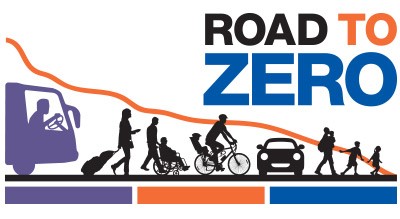 The Road to Zero (RTZ) goal is safe mobility for all people and will work to develop priorities; take action individually and collaboratively; and encourage partners and stakeholders to take action to meet the goal of eliminating traffic fatalities by 2050. The Road to Zero (RTZ) goal is safe mobility for all people and will work to develop priorities; take action individually and collaboratively; and encourage partners and stakeholders to take action to meet the goal of eliminating traffic fatalities by 2050.
The National Safety Council (NSC) leads the initiative as a partnership with the U.S. Department of Transportation, including the National Highway Traffic Safety Administration (NHTSA), the Federal Highway Administration (FHWA) and the Federal Motor Carrier Safety Administration (FMCSA). In addition, there is a steering group comprised of 16 organizations that that serves as the leadership of RTZ.
To read more about the Road to Zero Coalition, click here.
|
The Road to Zero Grant Program
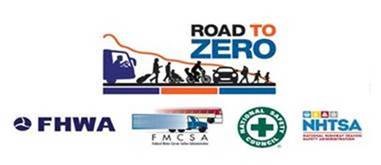 The Road to Zero Coalition's 2018 Safe System Innovation Grants cycle is now open until the end of January. Grants will be awarded in the spring. We are eager to advance the deployment of our Proven Safety Countermeasures, targeting local and rural roads through this grant program. State DOTs, local and municipal transportation agencies and others are eligible to apply. The Road to Zero Coalition's 2018 Safe System Innovation Grants cycle is now open until the end of January. Grants will be awarded in the spring. We are eager to advance the deployment of our Proven Safety Countermeasures, targeting local and rural roads through this grant program. State DOTs, local and municipal transportation agencies and others are eligible to apply.
Click here for the 2018 grants applications.
The focus of the Road to Zero Grant Program is to support the implementation of innovative evidence-based highway safety countermeasures.
- Proposals shall cite the evidence of effectiveness of the selected countermeasure and describe the innovative implementation approach.
- Proposed projects that link behavioral, roadway and/or vehicle elements will be given special consideration (e.g., incorporating roadway or vehicle strategies to change safety behaviors).
- Proposed projects shall have measurable objectives and generalizable results.
- Projects shall demonstrate innovative approaches that could be replicated in other locations.
- There is no limit on the number of grant proposals an organization can submit.
- Proposals from past awarded Road to Zero grants are eligible acceptable but they must include new elements to be considered. For example, an additional innovation to the project is eligible but a continuation of the past project is not eligible to be considered for funding.
Eligibility
- Applicants must be a Road to Zero Coalition Member. (There is no charge for membership).
- Applicant must be a non-profit organization such as a 501(c)(3), 501(c)(4) or 501(c)(6).
- State, local and municipal Governments Governors' safety offices, state and local departments of transportation, universities, law enforcement, public health, etc. are eligible to apply.
Proposed programs must operate within the United States.
|
Safety Organization Spotlight: West Region Transportation Workforce Center
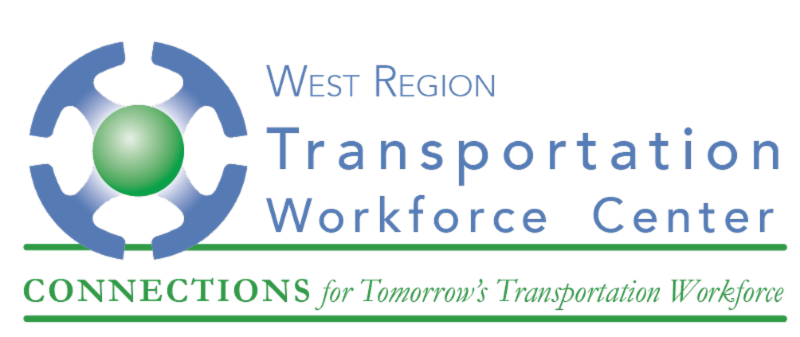 The
West Region Transportation Workforce Center
(WRTWC) was established by the Federal Highway Administration to bring together transportation organizations, workforce advocates, and educational institutions to develop partnerships that apply knowledge, experience, and resources to strategically build a strong transportation workforce for the future. The WRTWC, housed at the
Western Transportation Institute
at Montana State University, serves a ten-state Western region: Nebraska, South Dakota, North Dakota, Montana, Wyoming, Idaho, Washington, Oregon, Alaska, and Hawaii. The West Region Center is one of five regional workforce centers that make up the
National Network for the Transportation Workforce
. The
West Region Transportation Workforce Center
(WRTWC) was established by the Federal Highway Administration to bring together transportation organizations, workforce advocates, and educational institutions to develop partnerships that apply knowledge, experience, and resources to strategically build a strong transportation workforce for the future. The WRTWC, housed at the
Western Transportation Institute
at Montana State University, serves a ten-state Western region: Nebraska, South Dakota, North Dakota, Montana, Wyoming, Idaho, Washington, Oregon, Alaska, and Hawaii. The West Region Center is one of five regional workforce centers that make up the
National Network for the Transportation Workforce
.
To read more about the WRTWC, click here.
|
Tribal Technical Assistance Center Contract Awarded by FHWA
 The Federal Highway Administration (FHWA) Center for Local Aid Support (CLAS) has changed the model for the delivery of the Tribal Technical Assistance Program (TTAP). The former seven TTAP centers serving all tribes have been eliminated and replaced with a single National Tribal Technical Assistance Program which will operate five virtual centers focused on specific subject matter areas, a tribal Road Scholar program, and several Safety Circuit Rider/Injury Prevention programs. The Federal Highway Administration (FHWA) Center for Local Aid Support (CLAS) has changed the model for the delivery of the Tribal Technical Assistance Program (TTAP). The former seven TTAP centers serving all tribes have been eliminated and replaced with a single National Tribal Technical Assistance Program which will operate five virtual centers focused on specific subject matter areas, a tribal Road Scholar program, and several Safety Circuit Rider/Injury Prevention programs.
FHWA has awarded a two-year pilot program to the University of Virginia Transportation Training Academy to serve as the host center for the national TTAP program. The pilot seeks to centralize the coordination of training and technical assistance requests for the tribal community.
The contact for the new program is Beth O'Donnell at: (434) 924-6362/
[email protected]
; or reach out to Victoria Peters, Director of the Center for Local Aid Services at:
[email protected].
|
Safety Belt Usage Among Commercial Truck and Bus Drivers Rises to New National Levels
The U.S. Department of Transportation's Federal Motor Carrier Safety Administration (FMCSA) recently issued a press release announcing that safety belt usage by commercial truck and bus drivers rose to a new record level of 86 percent in 2016. To read the full release, click
here
.
|
SaferRide App can help Reduce Drunk Driving
Every holiday season, hundreds of lives are lost due to drunk drivers. Help reduce the toll of drunk driving by never drinking and driving, planning a safe ride with a designating a sober driver, or by using the National Highway Traffic Safety Administration's SaferRide app to call a taxi or a friend to be picked up. The app is available for Android devices on Google Play, and Apple devices on the iTunes store. Click here to read more.
|
Every Day Counts Round 5 Call for Innovations Open
Source: FHWA
The Federal Highway Administration is seeking information from State, local, and industry partners and the public on proven processes or technologies that have the potential to provide efficiencies. Specifically, the FHWA is interested in innovations and in processes, which have the potential to transform the way the highway transportation community does business by enhancing roadway safety, shortening project delivery time, reducing traffic congestion, and/or improving environmental sustainability. The information may assist FHWA identify proven, market-ready innovations for potential deployment through the fifth round of EDC (EDC-5) in 2019-2020.
To continue reading, click here.
|
Assessing the Impact of Transformational Technologies on the Transportation Safety Workforce

The
West Region Transportation Workforce Center (WRTWC)
at Montana State University is collecting feedback on how transformational technologies are expected to impact the skills required by transportation safety professionals. The Center is requesting your input to help better understand this important topic from the practitioner point of view. Please take a few moments to complete this brief self assessment. It should take no longer than 5 minutes to complete.To take this self assessment, click here.
The WRTWC is collecting this data to inform its
National Transportation Safety Career Pathways Initiative
as well as a workshop that will be held on the topic during the 2018 Transportation Research Board (TRB) annual meeting. In addition to completing the self assessment, if you are attending the TRB Annual Meeting, please consider joining the NNTW for this interactive session.
|
| Upcoming Trainings and Events |
Upcoming Safety Center Webinars
January 2018 - Pedestrian Treatments for Uncontrolled Locations
Date: January 18, 2018
Time: 11:00 AM to 12:30 PM Mountain/1:00 PM to 2:30 PM Eastern
To register for this webinar, click here.
|
We'll be at the Transportation Research Board 97th Annual Meeting
The Safety Center will be presenting at lecturn session 405: Paratransit, Safety, and Performance-Based Planning: Challenges and Opportunities for Small and Medium-Sized Areas on Monday, January 8th from 3:45 PM to 5:30 PM. Please join us to hear more on the outcomes from the Safety Summit #1: Moving Rural America Summit in our presentation entitled "On the Road to Zero, We Cannot Ignore Rural."
The Safety Center's new resource "Development Materials for a Local Maintenance Personnel Rural Road Safety Recognition Program" will be presented by the West Region Transportation Workforce Center (WRTWC) at the TRB Maintenance and Operations Personnel Committee Meeting on Tuesday, January 9, 8:00 AM to 12:00 PM at the Marriott Marquis, Catholic University (M1).
The Safety Center will also attend the following events in 2018:
- Lifesavers National Conference on Highway Safety Priorities: April 22-24, 2018 in San Antonio, TX.
-
National Association of County Engineers Annual Conference: April 22-26, 2018 in Wisconsin Dells, WI.
Return to Top |
WRTWC at the Transportation Research Board 97th Annual Meeting
National Transportation Career Pathways Initiative Stakeholder Engagement: Scoping Transformative Technologies - The impact of disruptive/transformational technologies in transportation on the workplace and workforce
Workshop 873: Thursday, January 11, 2018, 8:00 AM-12:00 PM, Convention Center 204B
Diana Long, Rahall Transportation Institute, presiding
Sponsored by Standing Committee on Transportation Education and Training
 The pressures of technological advancement within the personal and freight mobility spaces has created unprecedented challenges for employers and workforce development practitioners. How can the skillsets of current and future transportation sector workers be developed to address the rapid pace of innovation and new technologies in an increasingly dynamic and demanding workplace? The pressures of technological advancement within the personal and freight mobility spaces has created unprecedented challenges for employers and workforce development practitioners. How can the skillsets of current and future transportation sector workers be developed to address the rapid pace of innovation and new technologies in an increasingly dynamic and demanding workplace?
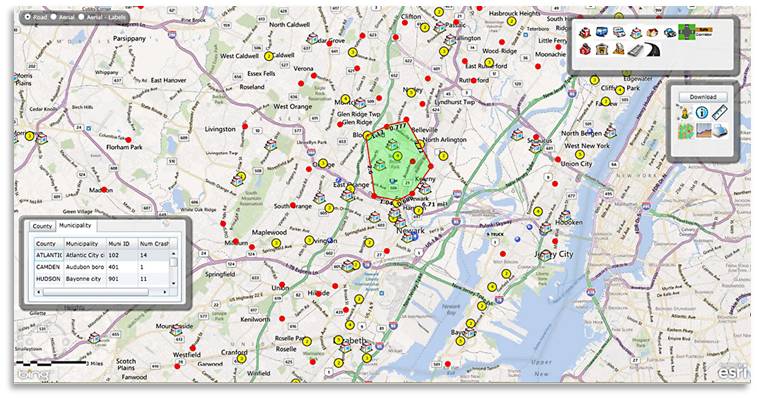 To address this challenge, the Federal Highway Administration
Center for Transportation Workforce Development
funded an initiative to identify the education, curriculum, training, and experiential learning required for post-secondary institutions to effectively deliver skilled and technically competent transportation workers for the next 15 years. Known as the
National Transportation Career Pathways Initiative
, this effort brings together academic and industry leadership to identify future workforce needs and how education and training at the technical school, community college, and university levels can be best designed to address those for the long term. As these discipline leaders work to create a framework to test implementation strategies at the post-secondary level, how can we design pathways that will succeed in supporting a future positive path for the transportation sector? This workshop will set the context for the project and invite in depth opportunities for practitioners and educators to provide their insights, feedback and perspectives on this effort. To address this challenge, the Federal Highway Administration
Center for Transportation Workforce Development
funded an initiative to identify the education, curriculum, training, and experiential learning required for post-secondary institutions to effectively deliver skilled and technically competent transportation workers for the next 15 years. Known as the
National Transportation Career Pathways Initiative
, this effort brings together academic and industry leadership to identify future workforce needs and how education and training at the technical school, community college, and university levels can be best designed to address those for the long term. As these discipline leaders work to create a framework to test implementation strategies at the post-secondary level, how can we design pathways that will succeed in supporting a future positive path for the transportation sector? This workshop will set the context for the project and invite in depth opportunities for practitioners and educators to provide their insights, feedback and perspectives on this effort.
|
Call for Presentations - 2018 National Transportation in Indian Country Conference
The National Transportation in Indian Country Planning Committee is seeking dynamic, engaging, and knowledgeable presenters for the 2018 National Transportation in Indian Country Conference (NTICC) that will be held September 17 - 20. 2018 at the Duluth Entertainment Convention Center in Duluth, Minnesota. The NTICC Planning Committee is accepting applications for conference presentations now through March 1, 2018. If you have a presentation you would like to share at this year's conference, please review the information
here
.
|
| What's Hot Off the Press? |
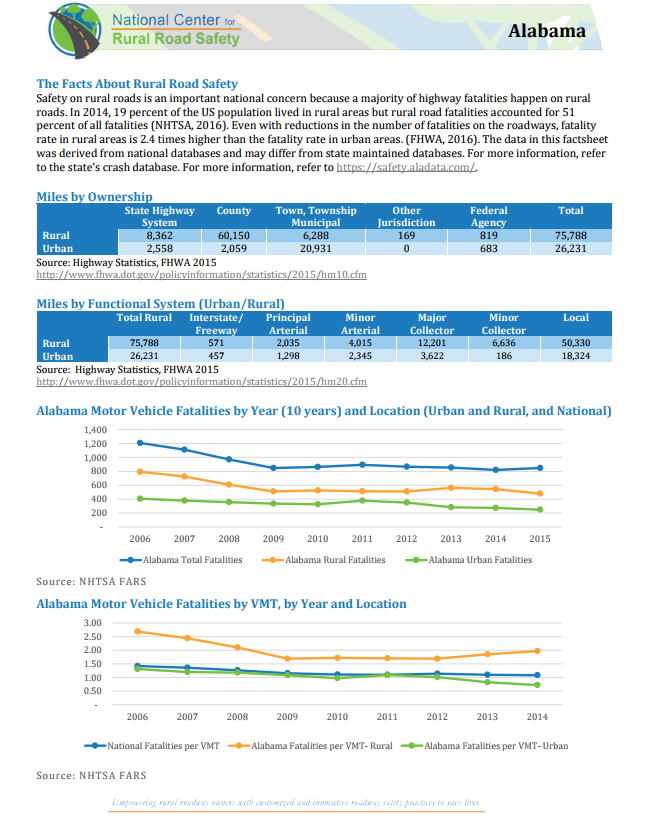
State Rural Safety Fact Sheets
Would you like for the Safety Center to prepare a rural safety fact sheet specific to your state? Our center will prepare a brief two-page fact sheet summarizing fatalities on rural roadways, fatalities by vehicle miles traveled, contributing factors, and other key factors such as time of day and day of the week. The fact sheets are a great way to engage state and local safety partners and decision makers in a conversation about rural safety challenges. Contact the Safety Center via
[email protected]
or via (844)-330-2200 for more information or to request your state's factsheet. To see examples already created for Alabama and Missouri click
here
.
|
Development Materials for a Local Maintenance Personnel Rural Road Safety Recognition Program Released
The report, which is targeted at those who may be interested in developing a safety recognition for maintenance personnel, highlights current work that has been done relating to roadway safety core competencies and curriculum. It then identifies potential learning outcomes and curriculum subjects for a rural road safety recognition for local maintenance personnel. Available resources, if any, for courses in these subject areas are also noted and gaps that need to be filled are listed. Finally it suggests a basic structure for how a program may be structured.
|
Safety Center Releases Phase 1 Research Report
The Safety Center has released their Phase 1 Research Report entitled:
Assessing the Operational and Cultural Environment of the Roadway Safety Workforce: State DOT Focus. This research was undertaken to understand the cultural and operational factors within traffic safety organizations that predict utilization of (effective) resources and tools for workforce training and education.
This report was also the focus of the Safety Center's January 2017 webinar and the archived version of that webinar can be found
here.
The Safety Center is currently undertaking Phase 2 (Local and Tribal Focus) of this research project, to learn more, click here.
|
Part 2 of the Tribal Road Safety Audit Videos Has Been Released!
The Safety Center is excited to announce the release of the second video in their Tribal Road Safety Audit Series Entitled Road Safety Audits: What they are and how to get started. Add this valuable tool to your road safety toolbox and share it with your colleagues! To watch the video, click here.
|
Guide for State DOT Safety Data Business Planning
 The Guide for State DOT Safety Data Business Planning
otherwise referred to as "the Guide" is now available from the Federal Highway Administration. The Guide focuses on safety data systems, which include crash, roadway, traffic, and railway-highway grade crossing data. A Safety Data Business Plan provides a roadmap for States to improve their safety data management and governance practices. These improvements provide better quality safety data to support safety decision-making and improved outcomes. The Guide can be downloaded
here
. The Guide for State DOT Safety Data Business Planning
otherwise referred to as "the Guide" is now available from the Federal Highway Administration. The Guide focuses on safety data systems, which include crash, roadway, traffic, and railway-highway grade crossing data. A Safety Data Business Plan provides a roadmap for States to improve their safety data management and governance practices. These improvements provide better quality safety data to support safety decision-making and improved outcomes. The Guide can be downloaded
here
.
|
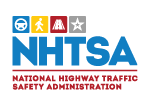
NHTSA 2016 Fatal Traffic Crash Data
The National Highway Traffic Safety Administration has released the 2016 Fatal Traffic Crash Data.
Click
here
to view the 2016 Fatal Motor Vehicle Crashed Overview.
|
Roadway Safety Foundation 2017 Noteworthy Practices Guide
The nine winning projects recognized in 2017 by the National Roadway Safety Awards Program have been collated into a resource guide that can be viewed
here
.
|
Safety Evaluation of Edge Line Rumble Strips (ELRSs) on Rural, Two-Lane Horizontal Curves
FHWA
has released a report that evaluates the application of edge line rumple strips (ELRSs) on rural, two-lane horizontal curves. ELRSs were created in order to reduce the frequency of run-off-road crashes and nighttime crashes by alerting drivers that they are about to leave the lane and by enhancing visibility of the edge line. Download the PDF
here
.
|
Expanding the Adoption of Blowing and Drifting Snow Control Treatments on Private Lands
The Minnesota Department of Transportation (MnDOT) has released a
report
that designs and evaluates an outreach program for the implementation of snow fences across MnDOT districts. This report builds upon previous MnDOT research that addresses blowing snow control treatments, including the use of standing corn rows, living snow fences, structural snow fences, and/or strategically placed bales on private lands.
|
Evaluation of Roadway Subsurface Drainage on Rural Routes
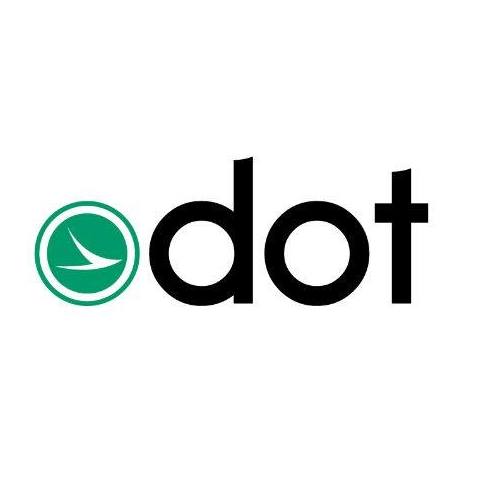 The Ohio Department of Transportation (ODOT) has released a
report
that identifies current practices of drainage installation on rural routes and evaluates cost effective options for drainage. Excess moisture can cause stripping, raveling, debonding, and rutting in flexible pavement, and therefore providing drainage may help mitigate the premature failures ODOT is seeing on rural routes. Drainage is also a safety concern affecting roadway conditions. The Ohio Department of Transportation (ODOT) has released a
report
that identifies current practices of drainage installation on rural routes and evaluates cost effective options for drainage. Excess moisture can cause stripping, raveling, debonding, and rutting in flexible pavement, and therefore providing drainage may help mitigate the premature failures ODOT is seeing on rural routes. Drainage is also a safety concern affecting roadway conditions.
|
Public Transit's Impact on Rural and Small Towns
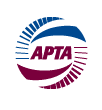
The American Public Transit Association (APTA) has released a
report
that examines current trends in public transit in rural communities and small towns. This report also assesses rural public transit's cost efficiency and describes successful examples of smaller community public transit programs.
|
Danena Gaines, Cambridge Systematics
Susan Gallagher, West Region Transportation Workforce Center
Janet Leli,
Rutgers' Center for Advanced Infrastructure and Transportation
Omid Sarmid, Rutgers' Center for Advanced Infrastructure and Transportation
Jaime Sullivan, Western Transportation Institute
Karalyn Clouser, Western Transportation Institute
|
|
|
|
|